Six months into taking up running, I was sat in my hospital’s physiotherapy department explaining, through frustration, how my knees felt so weak and that it sometimes hurt just to walk.
Having heard the ‘runner's knee’ story many times before, the physio told me if I didn’t take up an exercise that would strengthen my muscles and improve my core stability, I would risk damaging my knees permanently.
The problem wasn’t only in my legs, but imbalances in my hips and weak glute muscles.
He suggested cycling, swimming and regular non-impact gym training. And then he mentioned trying TRX (Total body Resistance eXercise) - the suspension trainer used by trainers, gyms, pro athletes, and all branches of the US Military.
I know I’m not alone when I say seeing TRX straps in the gym look daunting, but a month after training on it (and having lost body fat, increased muscle mass and physically felt the strongest I’ve ever been), I’m determined to convince at least one person that it’s not something you should ignore.

TRX isn’t like machine-based training in the gym. The concept is quite basic: you use the two straps with your feet or hands to partially suspend your body, then use your own body weight as resistance.
Every movement you do requires an integration of core, mobility, stability, strength, balance and coordination. I was told TRX is well-known as being good for runners because it corrects imbalances in leg strengths that usually lead to an uneven stride.
The benefits have been proved, too. In a study in the Journal of Strength and Conditioning Research, researchers compared exercises done with the TRX to more traditional versions of the exercises.
When it came to the core muscles, the TRX outperformed all other exercises.
While TRX can usually be incorporated as part of a gym session, I trained solely using the suspension straps for one hour, twice a week for four weeks with a personal trainer at Lomax Gym (an accredited TRX training centre).
As well as this, I completed one more exercise during the week - usually a cycle class or a short run.
Before the training started, I had my body fat (15.2%) and muscle mass (49.7%) calculated and all my measurements taken to see how much could change in a mere four weeks.
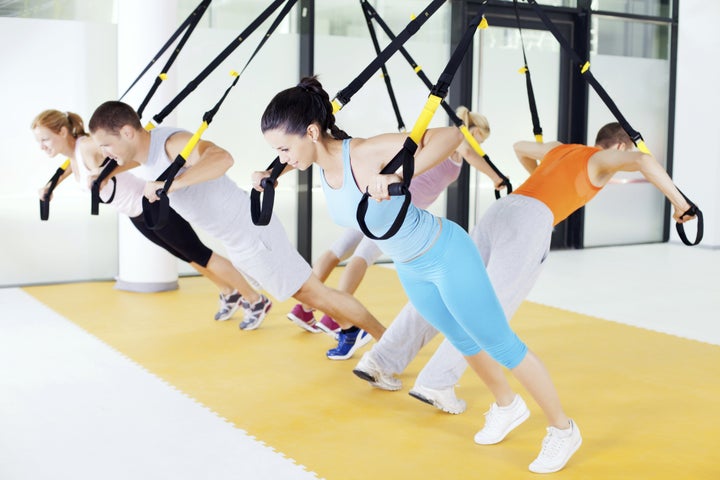
TRX training comes in the form of doing exercises, which are traditional exercises you may do in the gym, but suspended on the straps.
In more advanced circumstances, these exercises can be put together to form short sequences - something I managed to nail on my final session.
Admittedly, the first session was challenging.
Getting used to trusting the straps to hold my weight, let alone trying to keep myself balanced, was tricky. I was told within four weeks I would “easily” be able to do press ups, planks and single leg squats without wobbling around like the ground was unstable.
After the first week - just two hours of TRX training and a spin class - my thighs were burning and arms wouldn’t fully straighten. I didn’t feel like I had worked much harder than I usually would at the gym, but I slowly began to realise I was engaging my muscles in a way that I never had before.
Here are just some of the benefits I found and the reasons why I, hand on heart, will be continuing to preach just how brilliant suspension training is for our bodies.
It’s a full body workout
TRX training is never boring. I was constantly blown away and excited about the endless exercises you can do on two simple straps.
And while my gym training is usually more legs and stomach than it is arms, the TRX combined them all without me giving it much thought.
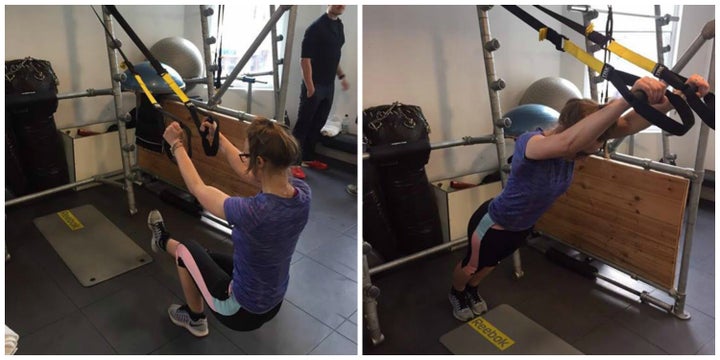
My TRX sessions involved a personal trainer demonstrating different exercises, which I’d then attempt and do 12 reps in sets of three.
Throughout the four weeks, we rarely repeated an exercise and constantly found new ways to use the straps (YouTube is the place to go).
Just as you can with machine-based training, TRX can literally work every single part of your body, from legs to arms to core, chest and glutes. And it became seemingly obvious just by using the straps for these different exercises what parts of my body were weaker and what needed work.
Your core stability is constantly tested
With every exercise on the TRX, you’re working your core stability muscles through keeping your balance and posture, while also working the muscles you’re moving.
The most beneficial thing I noticed throughout the month was how much my core stability and balance improved. On my first session, simply putting my feet in the straps to plank felt impossible - my legs wanted to jolt out to the sides and my whole body was shaking.
The first time I planked, I lasted about 30 seconds before collapsing into a heap on the floor.
By the final session (and my best achievement of them all), my time had gone up to one minute 30.
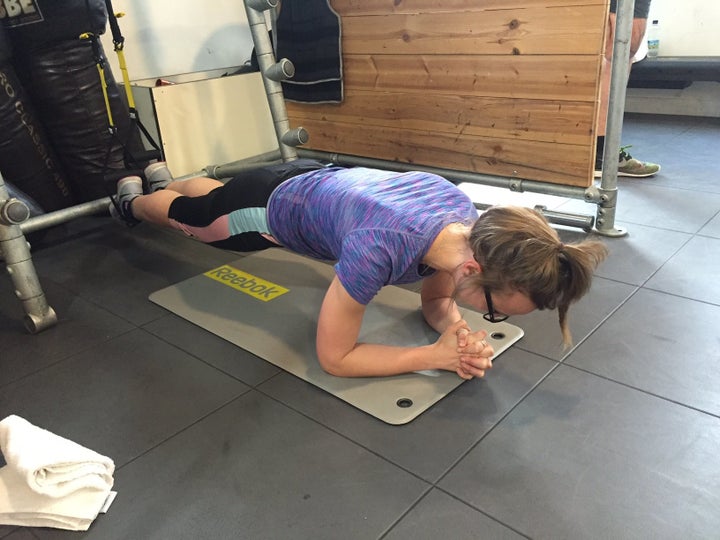
For me, improving stability and balance in my legs was hugely beneficial for increasing my leg strength, helping me to rebuild my form for running.
The TRX suspension lunge (below), I was told, is one of the single best exercises you can do to recognise and correct imbalances in your body that could lead to injuries when running.
There is no hiding from the move, it needs core stability and balance to do it properly.
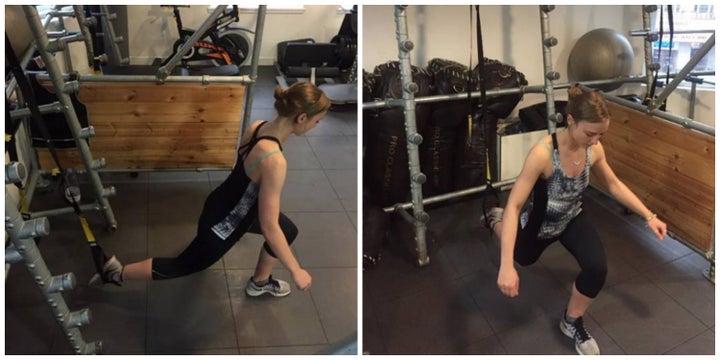
You can challenge yourself through 'progression'
TRX training is clever in the way it allows you to build on exercises and movements you can already do off the straps, in a more challenging way.
Once you've mastered them, they can be made even harder depending on where your feet are positioned or how far your body is positioned from the ground.
One of my favourite parts of TRX was taking a move that I found pretty easy off the straps and progressing it into something harder. So, after I'd nailed the plank, I moved onto pushing up into a TRX pike for 10 repetitions (below).

Once I’d mastered the plank into pike, I went for the one-armed side plank, single leg plank with elbow taps and rocking plank which, when you’re suspended, is a lot harder than it sounds.
Progression also came in the form of TRX mountain climbers. It's pretty obvious that doing them with your feet firmly stable on the floor behind you is a lot easier than doing mountain climbers with your feet balancing in stirrups.
When doing them on the TRX, you have to work on engaging your core, balancing, holding yourself up as well as moving your legs. Tricky, but it feels bloody good when you can do it.
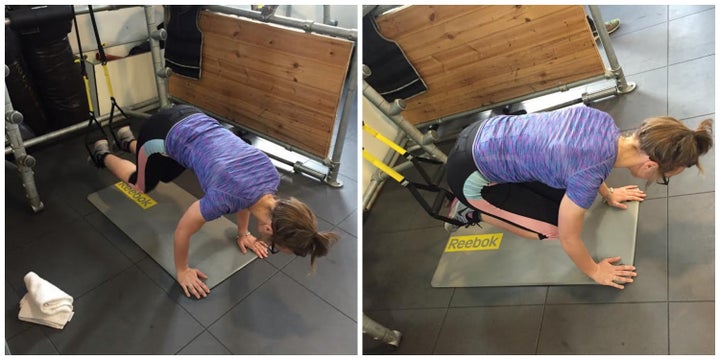
Progression will be unique to each individual, depending on your own abilities and strength. Once simple moves had been mastered, they were put into sequences like the below.
You can master other moves with 'regression'
Just as TRX can help you build on exercises you can do off the straps, it also gives you the option to master exercises you find harder by making them easier.
Hear me out.
Regression comes in the form of the straps providing some sort of assistance for you - a single-legged squat is often made easier with straps to guide you down and also means you can do them slowly and work on your technique to avoid injuries - something that helped me strengthen my knees.
Similarly, I don’t often use free weights and I’m pretty bad at press ups or being able to master a chest press.
But doing a chest press with my hands in the straps was a lot easier as I could use my own body as resistance rather than heavier weights that could potentially come crashing down on my face.
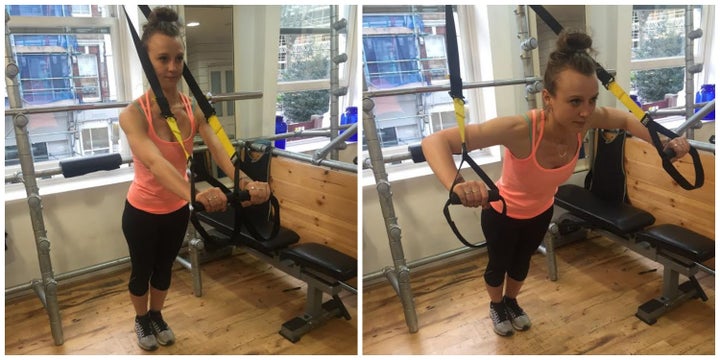
The results
For me, confirmation that four weeks of TRX training was worth it came in the form of being able to nail movements and exercises that at the beginning, I found near impossible.
It’s hard to explain until you use TRX yourself, but getting used to keeping yourself stable was just one of the small battles I overcame when progressing with my training.
My body fat decreased from 15.2% to 14% (it might seem small, but seeing as my body fat was at a healthy stage before, any more loss wouldn’t have been healthy), I increased my muscle mass and - although it wasn’t what I set out to do - I lost 2.5cm around my waist and stomach.
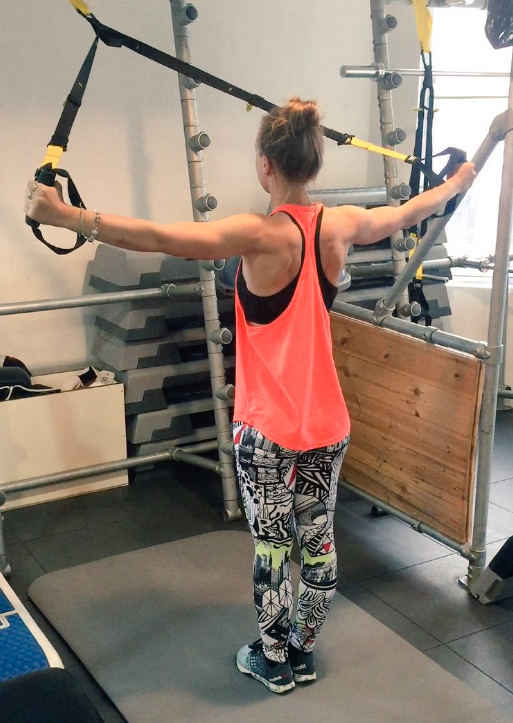
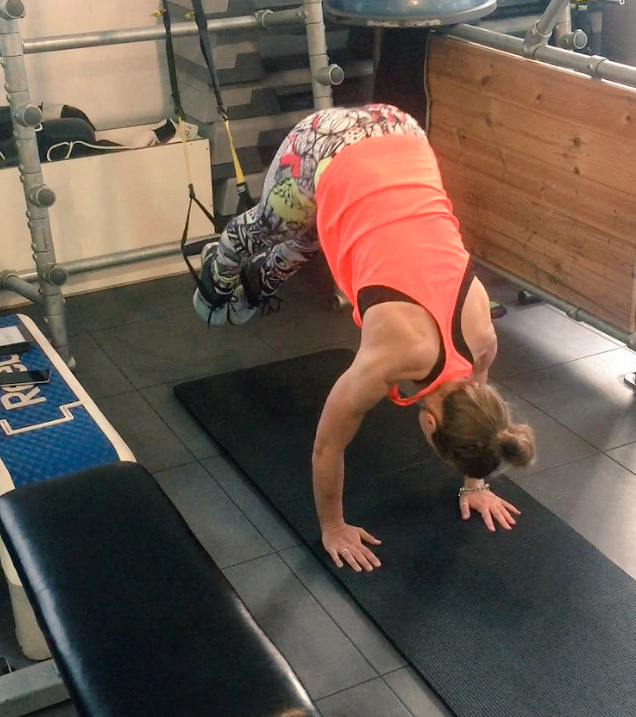
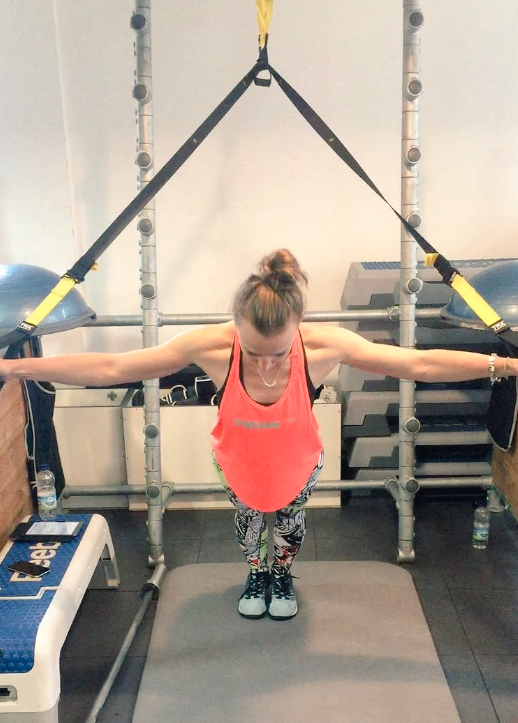
The most visible results for me were my muscles - I formed back muscles for what seemed like the first time ever and my arms were the most toned they’d ever been, yet I still found the exercise enjoyable and wanted to carry on.
Are my knees sorted? I would love to say yes, but I know it’s going to take more than four weeks of strength training to fix them. That said, my legs are stronger, my core stability has improved and I’m doing the right exercises to avoid permanent damage in the long term.
Training solely on TRX was an experiment for me, to learn about the benefits of suspension training and the various forms it can take. Going forward, my trainer advised TRX would work best integrated into a gym workout rather than being used in isolation. One of the classes I completed during the month was the Lomax Blast, which incorporated TRX squat jumps, lunges and push ups into a HIIT class.
There is a wealth of guidance on training on the official TRX website, but also on YouTube, with step-by-step instructions of completing new moves.
So next time you're in the gym and the TRX is free, don't just walk past it.
Try out some basic exercises and have fun with it. Like me, you’ll soon realise there are endless options to suit the workout to you (and I promise it’ll be worth it).
Lomax Gym run training sessions on TRX. I was trained by Krystina Reimer and Olli Carrier.